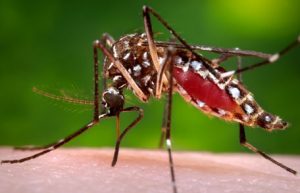
Scientists at Southern Research are heavily involved in the global fight against Zika, and are examining five different strains of the virus in a broad-based effort to penetrate the mysteries of a virus that was seen as posing little threat before being linked to devastating neurological abnormalities in unborn children as well as other maladies.
Through this multi-pronged inquiry, infectious disease experts in the Drug Discovery and Drug Development divisions at Southern Research have engaged in basic and applied science to better understand Zika, while exploring how the mosquito-borne virus progresses in infected human neural cells. Scientists are also using these virus stocks to develop in vivo models to evaluate potential vaccines and treatments.
In March, Southern Research developed the first in vitro antiviral assay for the Zika virus, giving researchers and drug developers worldwide a testing platform for new compounds and biologics capable of interfering with Zika virus infection and replication by detecting the accumulation of progeny virus in cull culture supernatants.
Timothy Sellati, Ph.D., chair of the Department of Infectious Diseases in Southern Research’s Drug Discovery division, said the Zika investigation aims to reveal the mechanisms that cause microcephaly, a rare disorder that causes a baby’s brain and head to be abnormally small.
“If we can understand how this virus affects normal human RNA, we may be able to develop therapeutics that can either eradicate the virus entirely or at least neutralize the virus’ ability to cause such severe damage to normal brain development,” Sellati said.
SUDDEN THREAT

After a surge in microcephaly cases in Brazil, the U.S. Centers for Disease Control in April confirmed the link between the birth defect and Zika. The virus has also been recently associated with Guillain-Barré Syndrome, a rare condition causing muscle weakness and temporary paralysis, as well as other illnesses in pediatric and adult populations.
“The more we learn about Zika, the more we realize how complex this virus truly is,” said Jonathan Rayner, Ph.D., Southern Research’s director of Infectious Disease Research. “While in the past, Zika was understood to be arthropod-borne virus associated with limited clinical pathology, we are now seeing increased transmission by previously unrecognized routes, including sexual transmission, and it is becoming increasingly associated with significant maladies in both newborns and adults.”
The virus was first identified in Uganda’s Zika Forest in 1947. Since this time, there have been several other outbreaks in various equatorial regions of the world, but Zika’s sudden emergence as a public-health hazard in the Americas makes developing a complete understanding of the virus a critical priority, Rayner said.
As part of that effort, Southern Research’s infectious disease researchers are studying five unique strains of the virus, each isolated in the geographic locations of a previous outbreak.
“One interesting question is whether, over this span of time, the Zika virus changed genetically in terms of its virulence and its ability to cause disease, particularly neurological diseases like microcephaly or Guillain-Barré Syndrome,” Sellati said.
“That’s a question we’re able to address in-house here at Southern Research.”
COORDINATED EFFORT
Southern Research is well positioned to take a leading role in the fight against Zika. With fully developed labs dedicated to drug discovery and drug development, the organization has deep experience in infectious disease research, including mosquito-borne viruses, and a longstanding history of exploring new drugs for a wide range of cancers and other maladies.
“We have a lot of experience working with other viruses in the same family as Zika,” Rayner said. “Dengue is a very good example. We have very active drug-screening programs against dengue and have developed the associated in vivo models to support drug development. West Nile virus is another example, as is Japanese encephalitis, yellow fever – we’ve established research programs and models for all of those.”

Sellati said teams of experts from various fields at Southern Research are collaborating on the Zika investigation, with the common goal of gaining insights that can combat the virus’ harmful spread.
“When you see the tiny brains, the tiny skulls of these children born with microcephaly, it’s amazing how devastating this viral infection on the normal development of the cerebral cortex,” he said. “We hope our research will help the scientific community better understand the aggressive nature of this virus, as we work collectively to fight its spread and develop effective therapeutic approaches.”
The Developmental and Reproductive Toxicology (DART) program at Southern Research is poised to assist Sellati and Rayner as a partner in this effort. Researchers in the organization’s DART program have decades of experience and expertise, which will be invaluable assets in the program to determine how Zika is able to interrupt normal brain development.
“Once we have a better understanding of the complex interactions between the Zika-infected mother and child, we can help define a strategy to effectively prevent or mitigate Zika-induced birth defects,” said Paul Bushdid, DART program leader.